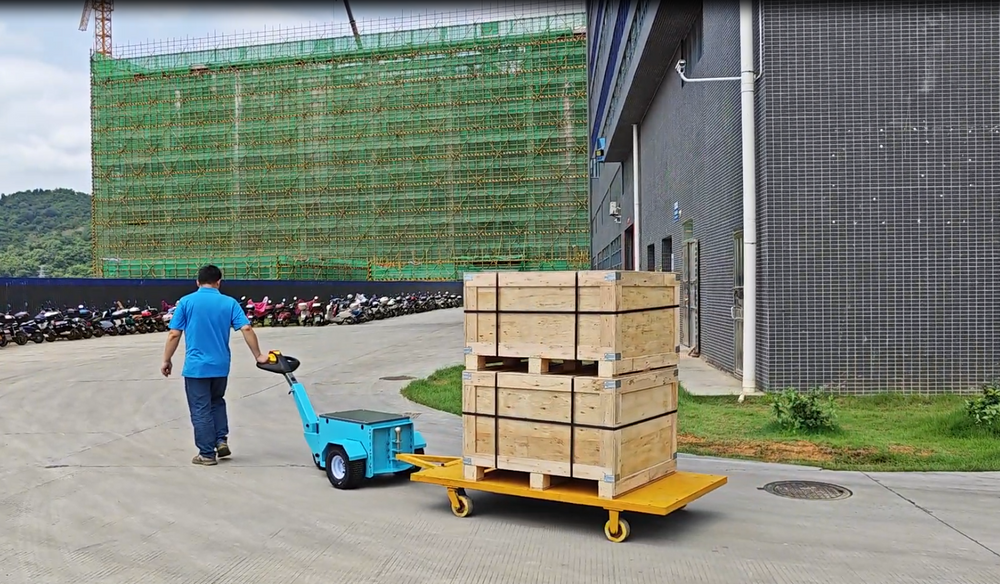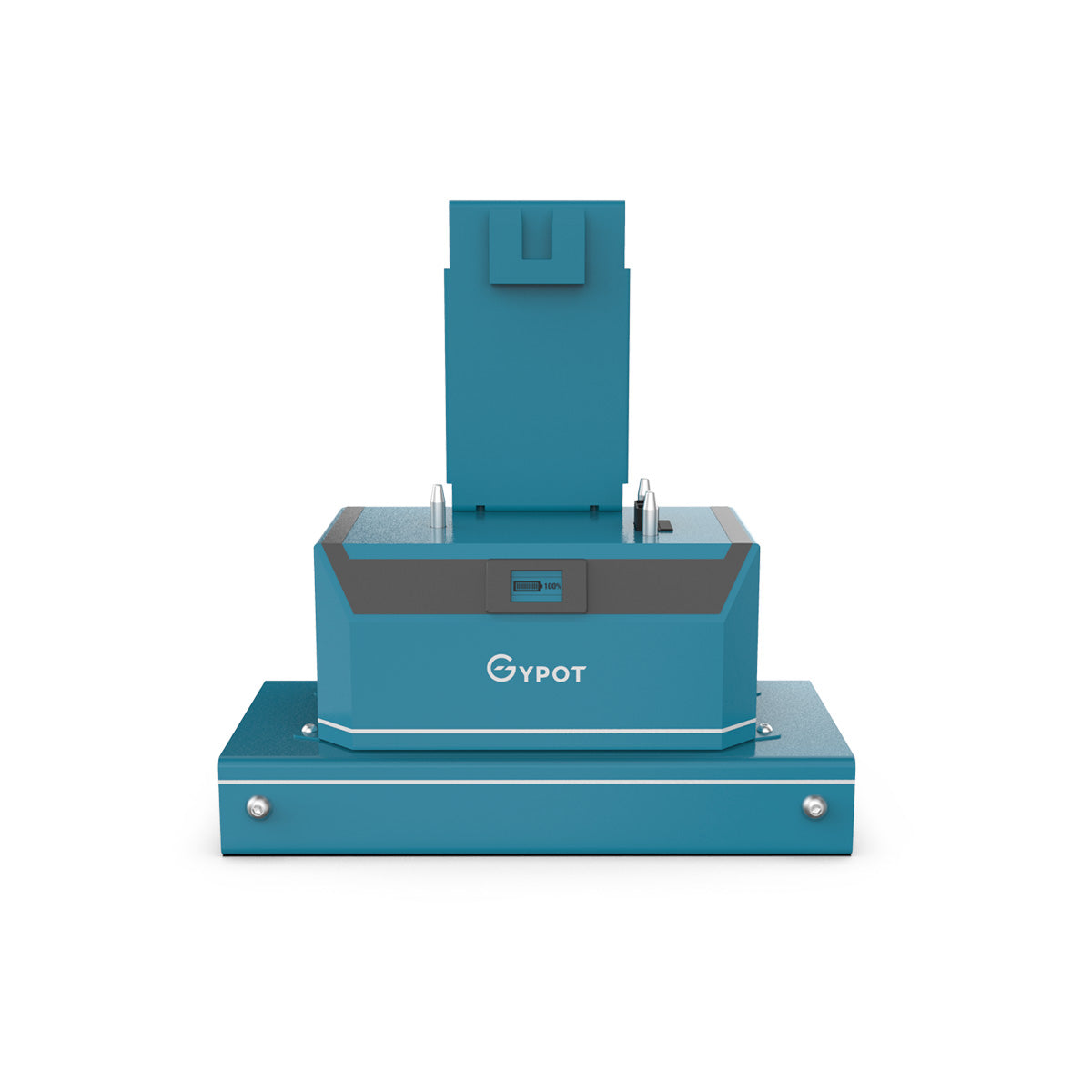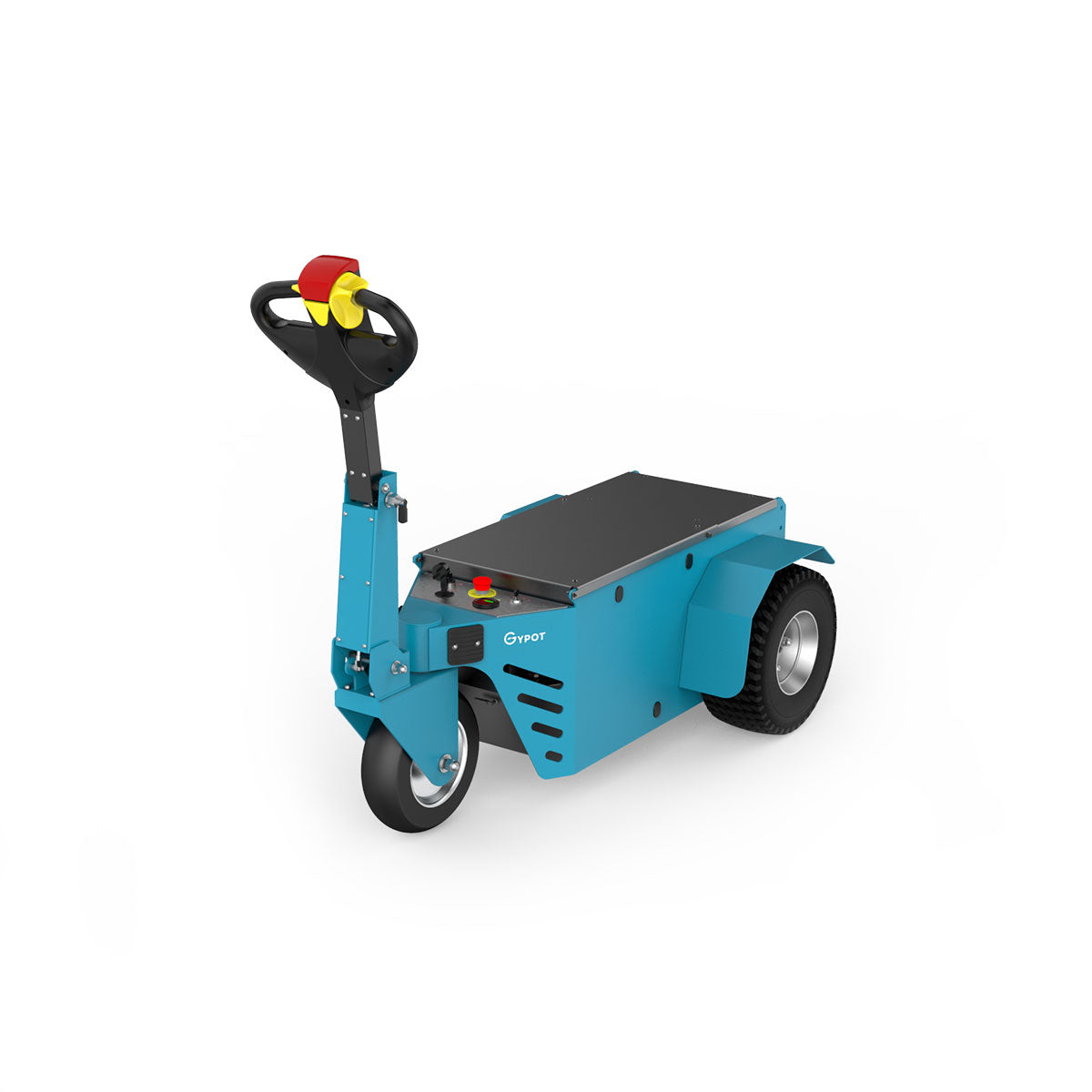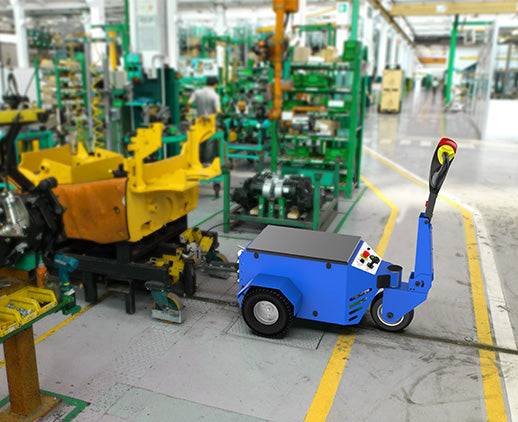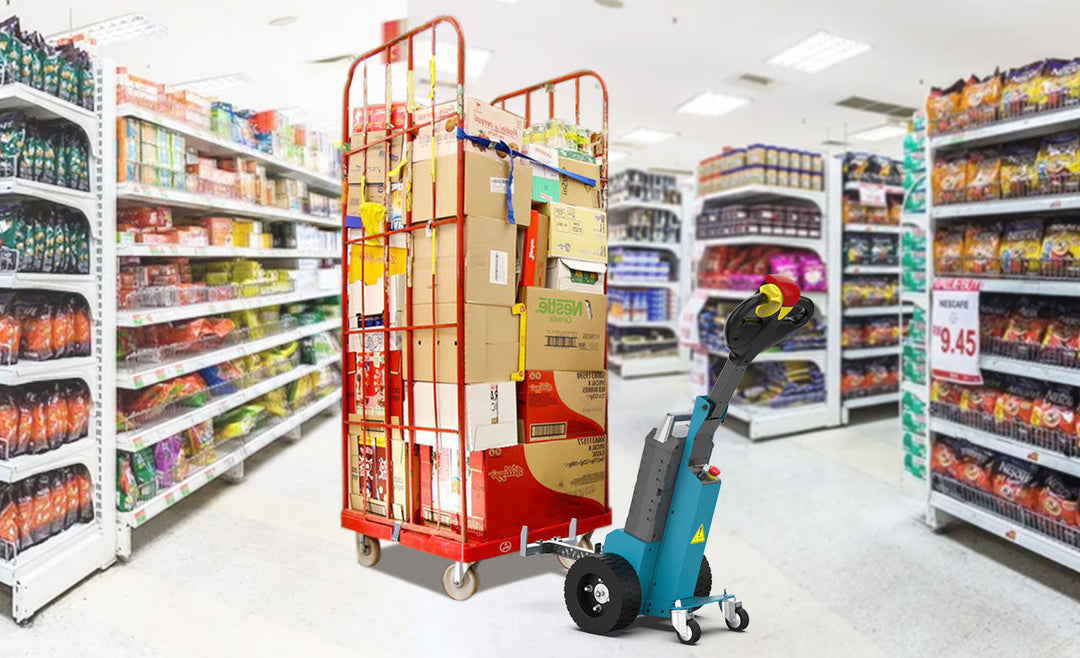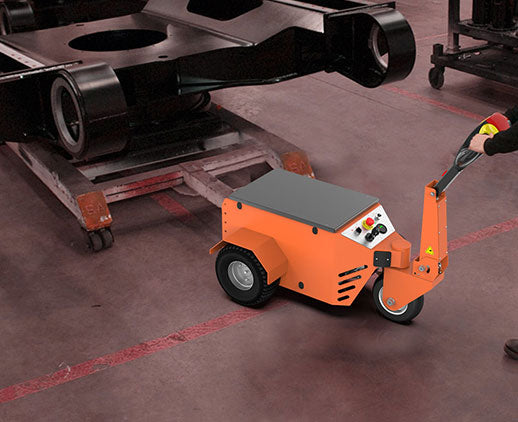7 Key Features to Consider in a Battery-Powered Tug
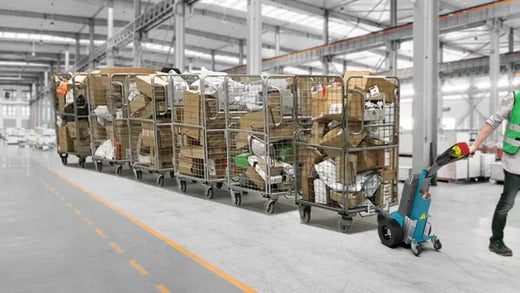
When selecting a battery-powered tug, pay close attention to the battery life for up to 2000 charge cycles, towing efficiency increased by 30% for 3000 kg, safety features offering a 70% reduced failure rate, customization capabilities that reduce operational costs by 20%, and being maintenance-free to save more than $20,000 in five years.
Battery Life and Efficiency
Although a warehouse or a production line usually needs more than 8 hours of operation, lithium batteries with 200Ah capacity and 12-hour runtime have been considered the best option. Lithium-ion batteries can easily last over 2000 charge cycles and cost 3 to 4 times lower than lead-acid batteries in the long run.
Fast charging technology can charge 80% of the battery in 1 hour, while traditional batteries take 6-8 hours to get fully charged, which increases the idle time. A logistics company has reduced the idle time by 50% after switching to fast-charging batteries, which finished two more transportation tasks per day and increased the annual revenue by 12%.
The high-quality lithium batteries can support operating 10 hours stably when fully loaded with 3000 kg, whereas less quality would reduce runtime by 30%. In a sub-zero temperature at -20°C, self-heating lithium batteries maintain 80% of their performance, whereas conventional batteries would lose efficiency by 20%-40%.
Efficient batteries significantly reduce operating costs, saving around US$1000 in maintenance each year and reducing work stoppage losses. At the time of choosing batteries, pay attention to capacity (Ah), charging time (hours), and power output (kW) with a view to meeting actual needs.
Towing Capacity
Light-duty battery-powered tugs are normally fitted with a 1000-2000 kg towing capacity, and this will be suitable for distribution centers and supermarkets. An industrial-grade electric tug can pull up to 5000 kg and may be applied in the manufacturing and aviation industries. Airports require 3000 kg tugs for their luggage carts, while distribution centers handle a lot of 1200 kg goods.
The capacity of towing is recommended to be kept within 80% of its rated value. A tug rated to 3000 kg does best at 2400 kg. This would protect the equipment, and efficiency will also be improved. Overloading uses 20%-30% more energy and hastens wear in equipment.
Application scenarios have very different requirements. A logistics company once bought a tug with 2500 kg towing capacity, saving them 15% in maintenance cost each year, while a manufacturing plant needs to use a tug with more than 3500 kg towing capacity for heavy equipment transportation.
Consider both the weight of the electric tug and the flexibility. A heavy-duty tug with a 5000 kg load can weigh upwards of 1500 kg itself, ruling it out for narrow workshops. Other warehouses settle for the middle-sized tugs carrying a 2000 kg load as a balancing act between flexibility and daily needs.
Maneuverability
Electric tugs have to be flexible to operate efficiently in narrow spaces. A tug with a less than 2 meters turning radius can turn back in 5 seconds if the aisles are less than 3 meters, while a regular tug will take 10 seconds or more and require several adjustments, thus saving 30 minutes of work time daily.
Tires and weight directly affect flexibility. A 1500 kg tug with pneumatic tires enhances traction by 20%, while steering precision on slippery surfaces increases by 15%. After changing tires, one logistics company managed to decrease the braking distance from 3 meters to 2.5 meters, which in turn decreased the accident rate by 12%.
Optimized control systems, such as EPS, achieve a high level of efficiency by reducing the steering force 40% and the time for a standard turn is shortened to 3 seconds. A model with a 360-degree rotating joystick achieves 25% higher efficiency in high-density storage areas compared to traditional systems.
Six-wheel designs can do well on uneven ground or a slope. The six-wheel system will reduce the risk of rollover by 50% compared to four-wheel tugs, with good stability on slopes over 10%. In a logistics park, six-wheel tugs were introduced which reduced the maintenance cost by 20% and resulted in an efficiency increase of 8% annually.
More intelligence further promotes flexibility: with the function of automatic obstacle avoidance, an electric tug can work even if there is a deviation of less than 5 cm. A tech company once replaced traditional equipment with intelligent tugs, after which the cargo docking tasks processed in an hour rose from 10 to 15, up 50%.
Durability and Manufacturing Quality
Generally, the frame of a good electric tug is made of more than 5 mm thick steel and can bear 5000 kg continuously for a long time, while cheap ones use 3 mm steel and may have weld cracks in two years under a load of 3000 kg. A logistics company once changed its tugs to high-strength steel and reduced the frequency of maintenance from once every month to once every quarter, saving 25% annually in maintenance costs.
Brushless DC motors have a lifespan of 20,000 hours, four times longer than brushed motors, which cost approximately $500 for replacement. A manufacturing company saved $1500 in maintenance costs over three years after upgrading the motor, improving operational efficiency by 15%.
In high humidity or corrosive environments, corrosion-resistant coated electric tugs can perform very well. The salt spray test life exceeds 10 years, while the ordinary coated equipment needs re-coating in less than 3 years. A port logistics company using corrosion-resistant-coated tugs decreased downtime by 40% and greatly improved the utilization of equipment.
Premium solid tires last 2000 hours under a 3000 kg load, twice as long as standard tires. A factory reduced tire replacement frequency by 50% each year, saving $500 in procurement costs by choosing high-density rubber tires.
High and low-temperature conditions are the most extreme tests. A good electric tug can operate continuously at 70°C for 4 hours while retaining 90% power output at -20°C, while ordinary equipment has a failure rate of up to 30% under similar conditions.
Detailed design also improves durability: high-strength bolts and anti-vibration designs reduce loosening due to vibration by 20%, while the improvement in the bolt system on a car production line saves 2% annually in terms of downtime, directly improving production efficiency by $1 million.
Safety Features
When the electric tug is fully loaded with 5000 kg and running at 5 km/h, emergency braking is initiated by the automatic braking system in 0.5 seconds, with a braking distance of about 1.5 meters. In contrast, without automatic braking, equipment has a delay of about 1 second, which can increase the braking distance by 2 meters and easily cause collisions in narrow spaces.
Collision detection sensors monitor obstacles within a 1-3 meter range via ultrasound, sending an alarm in 0.2 seconds and automatically reducing speed in 0.5 seconds. A manufacturing company was able to reduce collision incidents from 5% to 1% after the implementation of the collision detection system, saving $100,000 in annual maintenance costs.
Speed limiters adjust the operating speed according to load weight. The maximum speed is 3 km/h at full load (3000 kg), while it can increase to 6 km/h at light load (500 kg). Data indicates that the speed limiter reduces rollover incidents by 30% and improves operational flexibility.
Emergency stop buttons can be placed on either side of the electric tug and on the control handle for quick access to allow the operators to stop the equipment in under 1 second. A logistics company installed emergency stop buttons, preventing two major accidents that could have caused $500,000 in damage.
Intelligent monitoring systems record the real-time operational data of load, speed, and operation history. When overload or an abnormality is detected, it automatically triggers a speed limit mode within 0.1 seconds and sends an alert to the management platform. A warehouse company reduced operator errors by 20% and greatly improved the safety and stability of the equipment after introducing this system.
Options for Customization
Personalization of the electric tug contributes much to enhancing efficiency while serving diverse needs. Beyond this, a custom design ensures optimized equipment performance while decreasing operational costs significantly, giving business concerns the much-needed edge in competitive marketing.
· Tow Hook Configuration: Interchangeable tow hook tugs give more operational flexibility of about 20% in the logistical activities or warehouses, save vehicle-docking time, and provide the ability to make an extra 5 transport tasks a day.
· Load Selection: A battery-powered tug will require a higher-power motor with a 3000 kg load; lighter equipment can afford to be underpowered. A manufacturing company, for example, was able to achieve 15% savings on purchasing costs after adjusting configurations of loads, thus achieving an overall operational efficiency improvement of 10%.
· Size Adjustment: With its width less than 1.5 meters, a compact electric tug easily fits in narrow aisles; with an expanded chassis design, more outdoor usage would be possible. The use of a smaller electric tug has given a food company the capacity to reduce docking time by 30% and 8% improvement in cargo turnover.
By effectively using personalization, businesses will be able to meet specific needs while reaping efficiency and cost-saving benefits. For example, by customizing intelligent monitoring and lithium battery tugs, a retail company managed to increase its handling capacity from 500 tons a day to 650 tons, reduced the yearly operation cost of $150,000, and reduced downtime by as much as 20% at peak to ensure smooth flow in supply chains.
Cost Efficiency and Maintenance
The balance of initial investment with long-term maintenance costs makes electric tugs cost-efficient. For instance, a high-quality electric tug with a price tag of $20,000 may only need $500 worth of maintenance each year, whereas its cheap model might need repairs costing over $1000 each year, leading to higher overall costs over five years.
· Battery Type: Lithium batteries support up to 2000 charge cycles, with every charge requiring up to 1-2 hours, hence appropriate for high-frequency operations; lead-acid batteries have a lifespan of just 30% compared to lithium batteries, and replacement costs $300 per battery. A logistics company shaved its energy costs by 20% yearly after its shift to lithium batteries, saving $20,000 over five years.
· Maintenance-Free Design greatly reduces maintenance costs. Electric tugs with maintenance-free motors have no part replacements within three years, while traditional equipment costs about $1000 annually in repairs. A manufacturing company reduced its annual maintenance budget from $15,000 to $5000, improving ROI by 66%.
· Efficient Equipment reduces the cost of operations considerably. For example, a 3000 kg fully-loaded tug finishes 50 transport tasks every day, 15 more than a normal tug, and can carry an extra 10,000 tons of goods annually. A warehouse company earned an additional $500,000 each year because of increased efficiency in operations by 30%.
· Regular Maintenance prevents costly repairs. It reduces the rate of failure from 10% to 3% by performing extensive checks on batteries, motors, and braking systems every 500 hours. A logistics park saved $2000 annually on each electric tug after practicing this maintenance.
By optimizing the selection of batteries, designing for no maintenance, efficient usage of equipment, and regular maintenance, electric tugs reduce not only the costs of maintenance but also enhance the efficiency and profitability of the business considerably.




